
Original Link: https://www.anandtech.com/show/1707
Introduction
In the time before the Radeon, ATI's drivers were notoriously bad. ATI knew that, in order to compete in the high end consumer space with NVIDIA, their driver would need to be easy to use, intuitive, and stable. Thus, the CATALYST program was born.For the past few years, we have seen ATI's drivers grow in stability and performance. Features have been added that have continued to push the envelope of driver development. Features such as Overdrive (automatic overclocking) and VPU Recovery (soft reset to avoid system crashes) have been added and last year, ATI pushed forward with their Catalyst Control Center user interface redesign.
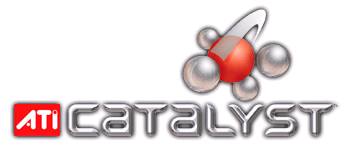
Received with mixed feelings, the CCC sought to offer an easy-to-use interface that anyone could use. Offering a realtime preview and very general sliders in the initial view, those who don't know or care about the intricacies of graphics could benefit from the quality or performance settings that ATI offers. It is even possible to see what a specific setting does in the preview window and thus, is able to educate customers as well. The downsides of CCC are its very laggy behavior, long startup time, and general clunky feel.
Building their driver interface around .NET this early in the game was a bit of a risky move. ATI's general feeling was that moving in the .NET direction was necessary combined with the ease with which partners and customers alike could extend the driver UI. The decision was made to get an early start on things.
The sentiment among the enthusiast crowd still seems to remain centered around a clean, simple interface rather than the Catalyst Control Center's approach. And, yes, skins can be used to make the CCC look a little more toned down, but making things unnecessarily bigger and slower for those who don't need or want the features offered is a tough sell.
Well, ATI is promising that the CCC and driver will be getting better and growing in features. Let's take a look at what exactly will be going on.
Catalyst 5.6
This month, ATI is focused on broadening compatibility and improving performance.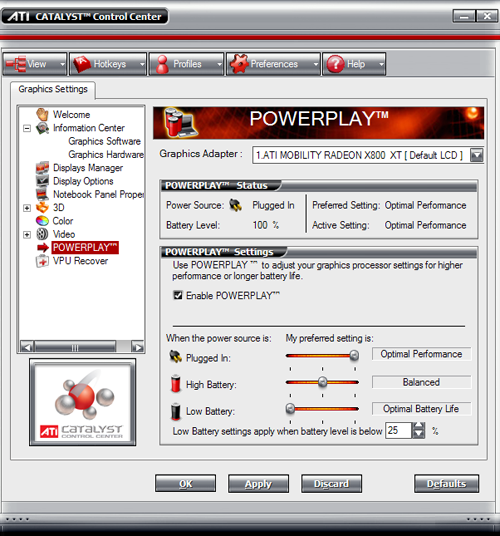
From this release on, ATI will be offering the lasted Catalyst software for their mobile GPUs as well as their desktop solutions. Rather than require mobile OEMs to certify and release their own drivers all the time, ATI will take the reins. Unfortunately, ATI must limit the notebook PCs on which their driver will install. OEMs that focus mainly on the business computing side of the market would rather have all their clients running exactly the same software configuration and don't want to allow end users to download and install their own drivers. In these cases, working with stability is the only important concern. The result is that, even though ATI's driver will work with any of their current generation mobility parts, they will only allow the driver to be installed on a select few systems that have opted in to the process. This will mainly include companies that focus on gaming notebooks.
Improving the CCC itself was also a goal of the 5.6 release. There have been some performance enhancements as well as some interface tweaks. The new driver loads faster than the 5.5, but there is still a noticeable pause before the window pops up. Navigating the menus and options is much smoother, and almost all the laggy behavior has disappeared. This fix has been necessary from the beginning, and we are happy to see that ATI has made progress here.
On the interface side, the cursor now changes on the display manager section to show how to use the interface. For example, a mouse with the right button flashing will appear if a right click menu is available for something. The drag-and-drop interface is easy to use, but unless people know what they need to do, it isn't very useful. ATI has also enhanced their system tray context menu to allow just about any setting to be accessed. This makes simple adjustments easy to make without loading up the entire UI. Also added is the information window, which provides software version and hardware details. The Linux install process has also been greatly simplified and automated.

From a feature set standpoint, we see a couple of new things in this release. Video settings have been added that allow real-time previews of video in a side-by-side comparison. This is helpful for adjusting the deinterlace settings. Unfortunately, only one example is given and it's difficult to show the benefits of the different methods without showing specific videos that respond better to one than the other.
It will now also be easier to view video on a secondary display in full screen. Before users were required to run in clone mode in order to watch full screen video this way, but now, it will be possible in extended desktop mode as well.
ATI has also been touting some performance enhancements this time around. We've heard that there should be a general improvement in OpenGL performance and that Doom 3 would specifically benefit. ATI showed us a list of games including Doom 3 and Call of Duty that showed performance gains. The most significant gain was in Lock On: Modern Air Combat, which benefited from Catalyst AI enabling texture compression with "no visual impact" on cloud textures. We didn't verify the results that ATI had with Lock On, but we did test a few games from our suite just to see what would happen. Here's what we ended up with:
| Radeon X800 XL @ 1600x1200 noAA/AF | ||||
| Doom 3 | Half Life 2 | Wolf: ET | Splinter Cell: CT | |
| Catalyst 5.5 | 50.2 | 104 | 95.3 | 39.9 |
| Catalyst 5.6 | 50.2 | 104.1 | 96 | 39.9 |
We also ran these numbers with 4xAA and 8xAF enabled. They were even closer in performance than what these numbers show. Needless to say, we weren't very impressed with the performance improvement (or lack thereof). It is possible that we could see a bigger performance improvement as CPU overhead becomes more of a factor (in other words, if ATI decreased the CPU load of their driver, we might see low res performance increase). We just feel that if a performance gain isn't going to show under most conditions (not the least of which is heavy load), then it doesn't have a very large impact on user experience.
Catalyst 5.7 and 5.8
On the table for 5.7 are quite a few enhancements as well. HyperMemory will be getting an upgrade in performance, CCC will come to 64-bit versions of Windows, and Multi-GPU features will be enabled. We can also expect new Media Center Extensions that will be geared towards helping users set up their displays.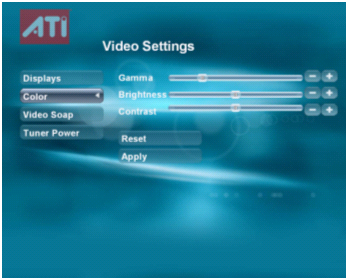
Catalyst 5.8 will see a new wizard come along, which should handle everything that anyone could want to do with their driver. This should even further extend ATI's ability to empower customers who aren't familiar with how graphics cards work.
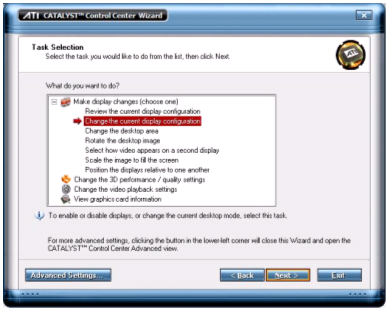
Also coming down the pipeline for 5.8 is a new interface for adjusting HDTV settings, including HDTV over DVI. This should really help, as it is a difficult task to get a computer set up to work well with an HDTV these days. ATI has said that the adjustments would include the function to adjust the borders of the video in order to minimize overscan while maximizing useable desktop space.
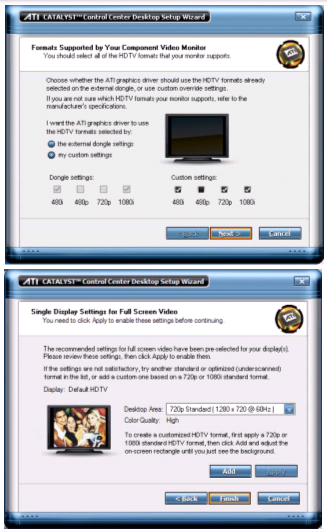
And that about does it for the information that we have on upcoming Catalyst launches. Hopefully, releases 5.7 and 5.8 will also be able to deliver some performance improvement as well.
Final Words
We are definitely looking forward to the new features coming down the line. For now, the Catalyst Control Center has become a useable feature with the improved load time and the decreased lag in changing options. We feel that the interface still needs to be massaged in order for the enthusiast crowd to embrace it. Right now, if you know what you are doing, there is really no compelling incentive to install CCC when the control panel works fine.It is commendable that ATI have begun pushing their mobility driver along side their desktop Catalyst offering, but unless most OEMs opt in on the program, the end users won't see any benefit.
The video options now available in Catalyst are getting better, but we would like to see more finely grained control and a useful preview. If we could select a preview source and play with the options, that would be more compelling. The issue is that every video clip is unique and responds differently to settings. Of course, the current preview shows ATI's motion adaptive mode to be the best option, but in some cases, we may see better results from something else.
Better control of HDTV modes is long over due. NVIDIA gave it a shot a few months ago, but even their controls are still too clunky. We will be interested to see what ATI can do with this. Adding the Media Center Extensions is also a good effort to make. Easily adjusting TV settings is a difficult task in itself, but doing it via a 10-foot UI is even better.
It goes without saying that we are disappointed in the performance of Catalyst 5.6. We had been expecting at least a small improvement in our OpenGL titles, but none of the games that we tested showed any improvement (less than 1% improvement falls into the "noise" category).
While Lock On may have shown some significant improvement and application specific optimizations are of interest, a single game gaining performance isn't as compelling as what a general improvement in OpenGL performance would be.







